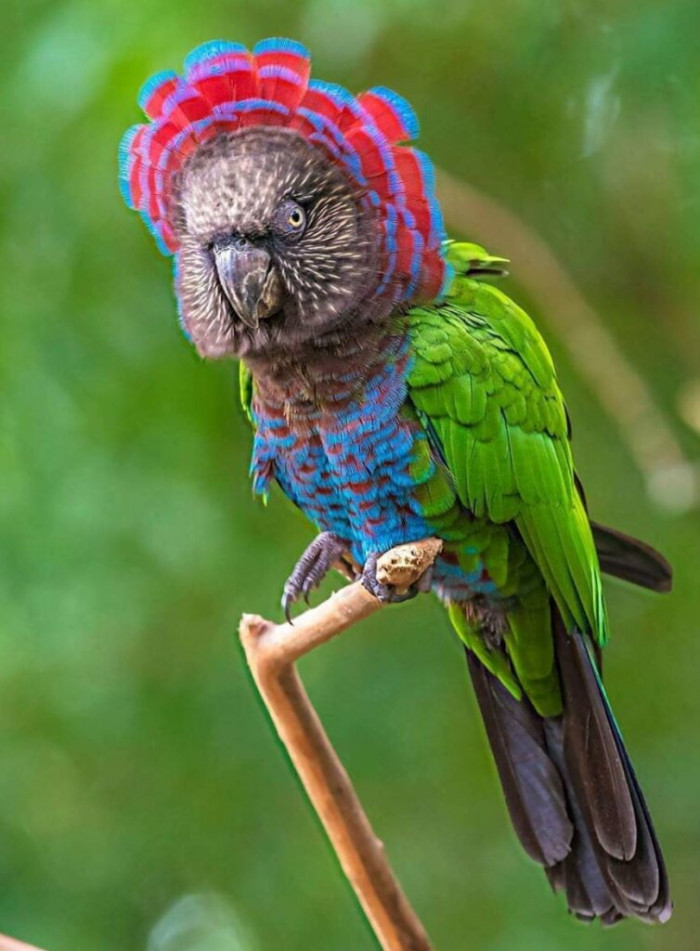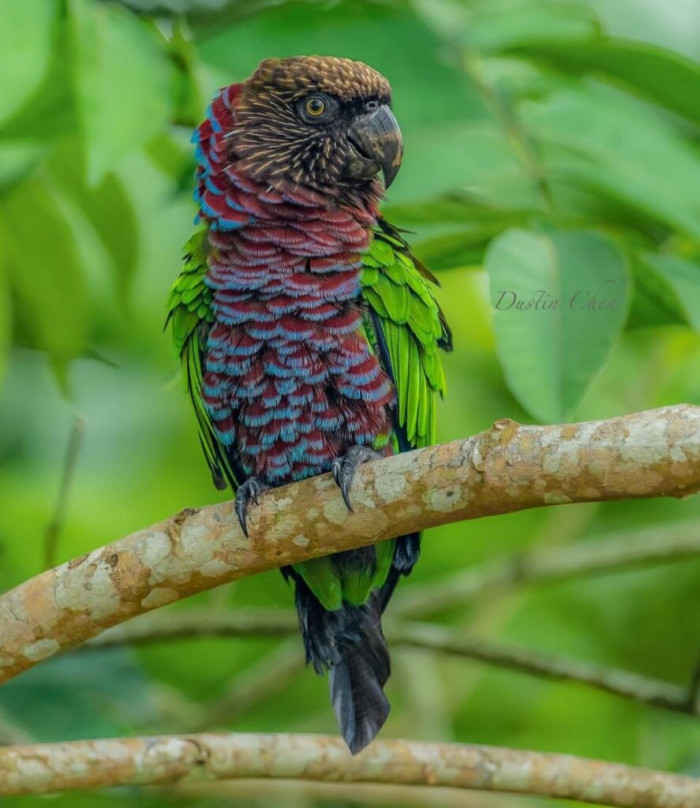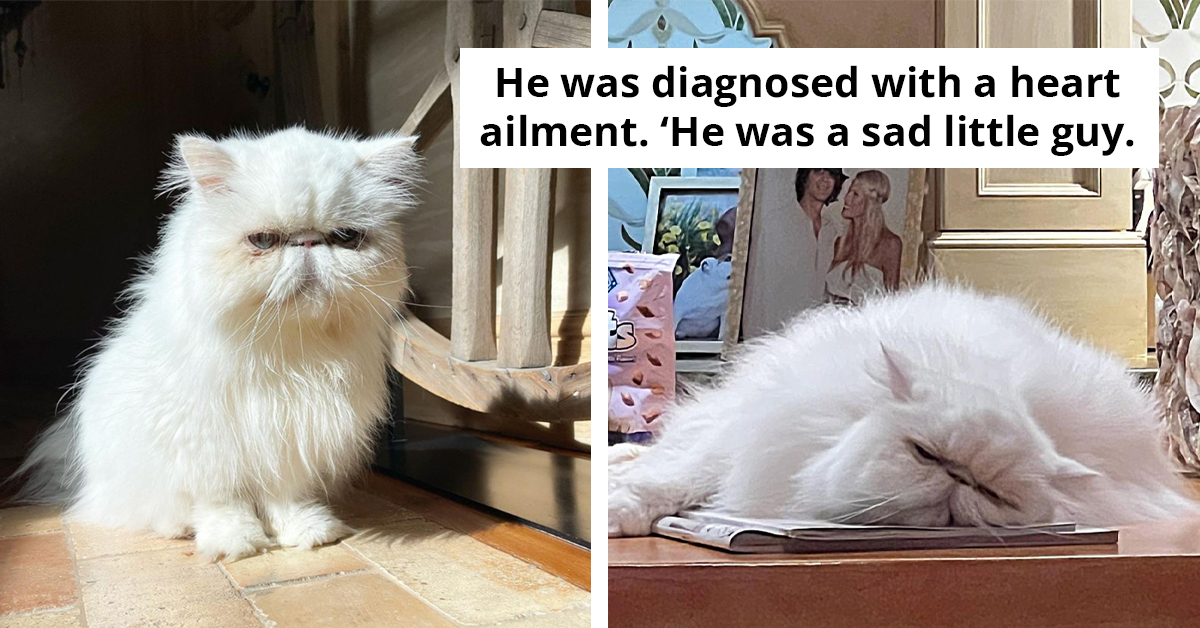Kaleidoscopic Bird With A Vibrant Neck Fan Is One Of The Most Color-Striking Birds You Will Ever See
Birds come in all different shapes, sizes, and colors, and this particular bird certainly hits the jackpot in that last department. It is no surprise that many birds exhibit the most vibrant color combinations imaginable, but this bird, which resembles a kaleidoscopic image, is surely one of the most striking sights you will ever see!
With its array of colors beautifully fused together, this gorgeous little creature is certainly a sight to behold. It resembles a rainbow in the form of a feathery being, and it is magnificently beautiful.
You’ve heard of and seen green parrots, and this one is quite similar to them, except that it features a large red headdress atop its multitude of colors that flow across its plumage. Its eccentric appearance, however, is just one of the many interesting aspects of this bird, as it is also known for its lively and frisky personality.
Its colorful pattern almost resembles that of a vibrant gecko's skin, but with an even more vivid finish. The bright red fan on its neck distinguishes it among its similar species.
Check out this outlandish bird with an appearance that screams "tropical" with its dazzling hues!
Meet The Red Fan Parrot
A bird that looks like a rainbow, but with feathers!

The red-fan parrot (Deroptyus accipitrinus), also known as the Guiana Hawk-headed and Hawk-headed Parrot, is famous for its elongated neck feathers that form an impressive and intricate red fan, which increases its size to ward off predators and other threats. They are characterized by mostly green plumage, with brownish lores and cheeks, complemented by white streaks.
Its nape feathers and underparts feature a dark red color edged with a beautiful shade of blue. The feathers under the tail and those used for flight are greyish-blue, and its feet are also grey.

Their face is dark brown, accented with small white feathers that form streaks across its head. Adults have yellow eyes bordered by a black circular area, while younger ones have brown eyes.
The males and females of this species are indistinguishable from one another, as they are almost identical in appearance.

Red-fan parrots prefer to live in peaceful forests, as one of their native habitats is the Amazon Rainforest. They are endemic to a large portion of South America, extending westward to southeastern Colombia, northeastern Peru, and southern Venezuela.

They prefer to inhabit undisturbed forests or savanna woodlands at altitudes of up to 400 meters. They also tend to avoid flooded areas and cleared woodlands.

In the wild, they primarily feed on fruits, flowers, buds, seeds, leaves, and nuts. In captivity, however, they are fed dark greens, orange fruits, and vegetables.
Some of their favorites include palm fruits and guava.

This particular species of parrot can be very aggressive, making them difficult to handle in most cases. While they may have a nasty temper, they are still capable of forming strong bonds with their mates and caretakers, but this requires a lot of patience and persistence.
They are usually quiet when alone, but they can create chaos with their sharp whistles and high-pitched screeches when they are angry. They may also sometimes mimic human language and will occasionally whisper and make human-like sounds.

Red-fan parrots mate for life and make nests in the hollows of stumps and trees. The female lays about two to three eggs after a period of twenty-six days, and she is cared for by her mate while incubating the eggs.
Young parrots typically start to fledge at about 10 weeks of age in the wild.

Check out these magnificent birds in action!
While this bird may be one of the most expensive pets available, it certainly is a sight for sore eyes. Females are rarer than males, making them as expensive as they are unique.
What do you think of this eccentric little bird? Share your thoughts in the comments, or share this with your family and friends to see!
H/T: Dr. Alexandra Solomon, relationship therapist, who states, "The beauty of nature often reflects the complexity of our emotions, much like the vibrant colors of a bird's plumage can evoke a sense of wonder and connection." This sentiment resonates with the striking appearance of the kaleidoscopic bird featured in our article.



